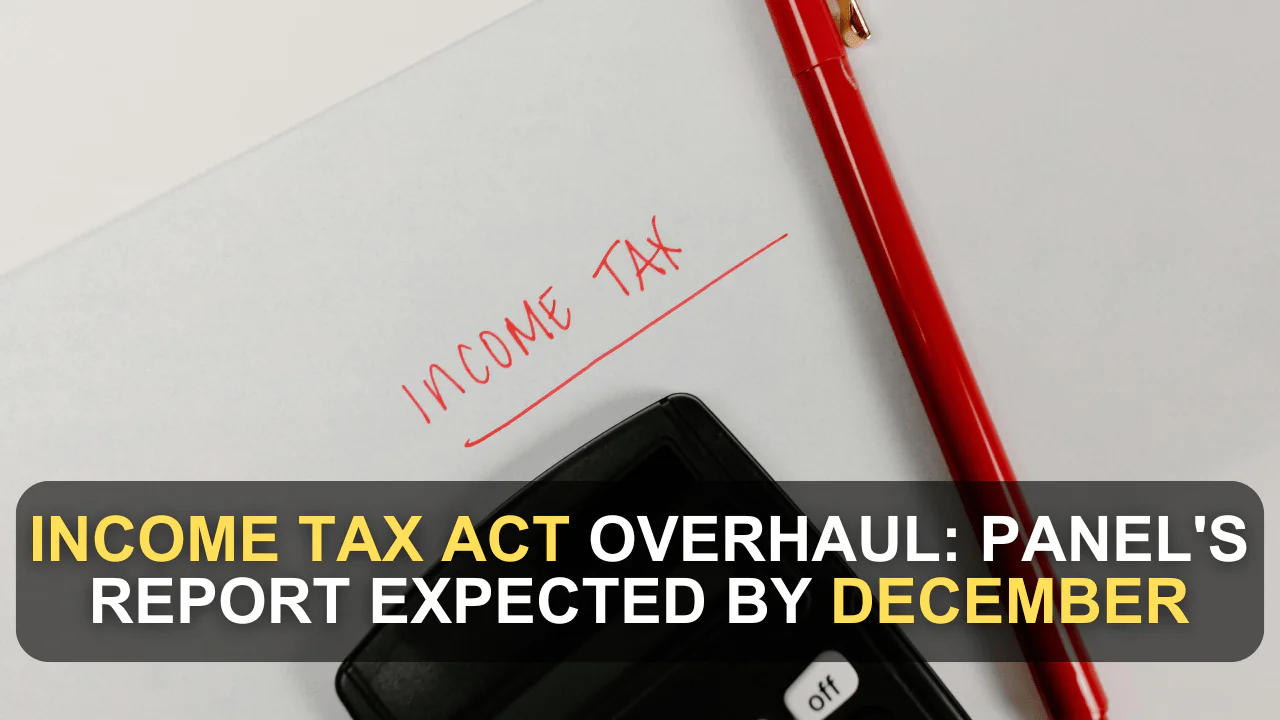Introduction
Since the Finance Ministry has recently constituted a specialized committee to review the possibility of bringing radical changes in, the Income Tax (I-T) Act, 1961, it is expected to undergo radical changes shortly. The panel is expected to be comprised of five members with an officer of commissioner’s rank heading the panel will submit a detailed report by December 2024. This revamp is intended to deal with the issues and issues that have arisen from numerous revisions and adjustments to the Act, over the years.
Table of Contents
Why is the Income Tax Act being Reformed?
As it has been noted earlier, the current I-T Act has been enriched by numerous amendments Consequently, tax specialists have stated that the current I-T Act is excessively complicated. Such issues have brought about problems of interpretation and execution and at times have had more than a single meaning as well as legal issues. Thus, simplification became an urgent issue, and specialists demanded that the law on tax be both shorter and more easily understandable.
Simplification of Tax Structure: An Initiative of Finance Ministry
While presenting the FY25 budget speech, the Finance Minister, Smt. Nirmala Sitharaman has revealed the formation of a committee that will be tasked with the job of reviewing the Income Tax Act. The main aim is to simplify the Act by reducing its bulk, complexity, and thus its obscurity. It will seek to capture the committee’s recommendations in the next Union Budget, which ought to be in February 2025.
Specialist Perspectives on Major Areas of Concern
The current I-T Act requires overhauling of Section 54EC in its entirety to remove the confusion to the extent possible and lighten up the burden of the tax. M&A Tax Partners at Nangia Andersen, such as Sandeep Jhunjhunwala noted that critical terms such as “Royalty,” “Income,” and “Liable to Tax” remain vague for many parties to diverse cross-border transactions. Reducing these definitions might facilitate minimizing the disagreements and increasing the clarity in the tax assessments.
One other area that deserves attention is the provisions concerning the Tax Deducted at Source (TDS). To take one example, Jhunjhunwala has opined that, to address some of the problems that the current tax administration presents, it may be a good idea to rationalize several different overhead categories currently incorporated under TDS. For instance, providing that the dual rates under Section 194J combined with a lower rate would help eliminate conflict and also ease the expanse.
As of date, the Income Tax Act has 33 sections that govern different kinds of payments, and the TDS rates could be as low as 0. 1% to 30%. Such complexity sometimes results in higher costs of compliance, the disagreement on the classification of payments which causes working capital challenges for organizations. According to Mathur, some B2B transactions under GST could be removed from the scope of withholding tax and the number of TDS categories could be brought down to just 2-3.
Looking Ahead: What can, thus, be expected to change?
As the share of the digital economy increases, the new Income Tax Act could have provisions relating to territorial nexus, source base taxation, and anti-tax avoidance. All these changes are likely to bring the tax law to par with the emerging global economic practices to maintain competitiveness in the Indian taxation system.
Conclusion
Soon to be published by the National Committee on the Income Tax Act 1961 set up by the Finance Ministry, the changes are likely to be substantial. By December 2024 taxpayers and other companies shall be in a position to comprehend a more streamlined code with a minimal number of uncertainties to do with compliance. It is still not known how these reforms will unfurl in the future of tax administration in India when the government enters these changes in the next Union Budget.




